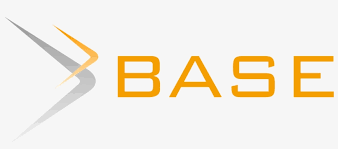ASEAN SOCIAL ENTERPRISE DEVELOPMENT PROGRAMME SEBAGAI MANIFESTASI REGIONALISME BARU DALAM INTEGRASI KAWASAN YANG INKLUSIF
DOI:
https://doi.org/10.38043/jids.v9i2.6819Keywords:
Integrasi Kawasan, Regionalisme Baru, ASEAN SEDP, Multi-Stakeholder Partnership, Social EnterprisesAbstract
Penelitian ini menganalisis ASEAN Social Enterprise Development Programme (ASEAN SEDP) sebagai manifestasi dari pendekatan Regionalisme Baru dalam kerangka integrasi ekonomi kawasan Asia Tenggara. ASEAN SEDP merupakan program berbasis kemitraan multi-pihak (Multi-Stakeholder Partnerships/MSPs) yang dirancang untuk memberdayakan wirausaha sosial muda melalui pelatihan, pendampingan bisnis, akses pembiayaan, serta jejaring lintas sektor. Penelitian ini menggunakan pendekatan kualitatif deskriptif-analitis dengan data sekunder. Temuan utama menunjukkan bahwa ASEAN SEDP mencerminkan prinsip-prinsip Regionalisme Baru, seperti keterlibatan aktor plural lintas sektor, pendekatan dari bawah (bottom-up), serta orientasi multidimensional yang tidak hanya menekankan pertumbuhan ekonomi tetapi juga pemberdayaan komunitas akar rumput. Berbeda dengan ASEAN-BAC dan ACCMSME yang cenderung elitis dan teknokratik, ASEAN SEDP berhasil membangun model integrasi kawasan yang lebih inklusif dan kontekstual melalui wirausaha sosial (social entrepreneurship). Studi kasus dari peserta ASEAN SEDP menunjukkan dampak nyata berupa penciptaan lapangan kerja bagi kelompok rentan, peningkatan kapasitas wirausaha, serta perluasan solidaritas sosial antarwarga ASEAN. Penelitian ini merekomendasikan agar model kolaboratif seperti ASEAN SEDP direplikasi dan diintegrasikan ke dalam kebijakan regional ASEAN secara lebih sistematis sebagai pelengkap inisiatif ekonomi formal, demi memperkuat integrasi ekonomi yang inklusif dan berkeadilan di kawasan.
Downloads
References
Chandra, A. C., Abdulrahim, R. and Almuttaqi, A. I. . (2017). Non-state actors’ engagement with ASEAN: Current state of play and way forward. Dalam A. a. Baviera, Building ASEAN community: (hal. 221–246). Jakarta: Economic Research Institute for ASEAN and East Asia (ERIA).
Chandra, A.C., Abdulrahim R., dan Almuttaqi, A. I. . (2017). Non-state Actors’ Engagement with ASEAN: Current State of Play and Way Forward. Dalam B. A. Maramis, ASEAN @ 50 Volume 4: Building ASEAN Community: Political-Security and Socio-cultural Reflections (hal. 221-246). Jakarta: Economic Research Institute for ASEAN and East Asia (ERIA).
ASEAN Business Advisory Council (ASEAN-BAC). (2018). The Voice of Business in ASEAN Awareness of Responsible and Inclusive Business Policies – a pilot study. Diambil kembali dari ASEAN CSR Network: https://www.asean-csr-network.org/c/images/Resources/Reports/ASEAN-Voice-of-Business.pdf
ASEAN Economic Community Blueprint. (2008, January). ASEAN Economic Community Blueprint. Diambil kembali dari ASEAN: https://www.asean.org/wp-content/uploads/images/archive/5187-10.pdf
ASEAN Foundation. (2021, April 16). ASEAN SEDP: Empowering Social Enterprises to Accelerate Sustainable Development & COVID-19 Recovery. Diambil kembali dari ASEAN Foundation: https://www.aseanfoundation.org/asean_sedp_empowering_social_enterprises_to_accelerate_sustainable_development_covid_19_recovery#:~:text=21%20April%2C%202021%209:26,severely%20limit%20their%20operating%20activities.
ASEAN Secretariat. (2015). ASEAN Economic Community Blueprint 2025. Jakarta: ASEAN Secretariat.
ASEAN SEDP. (2021). About ASEAN SEDP. Diambil kembali dari ASEAN SEDP: https://aseansedp.org/about-asean-sedp/
ASEAN SEDP. (2021). About ASEAN Social Enterprise Development Programme. Diambil kembali dari ASEAN SEDP: https://aseansedp.org/about-asean-sedp/
Basir, Salawati Mat dan Saidatul Nadia Abd Aziz. (2018). DEVELOPMENT GAPS IN ASEAN AS CRUCIAL SECURITY ISSUES: A CHALLENGE TO ASEAN INTEGRATION. ASEAN JOURNAL OF LEGAL STUDIES Vol. 1 No.1, 28-35.
Bøås, Morten, Marchand, Marianne H. dan Shaw,Timothy M. (1999). The Weave-World: Regionalisms in the South in the New Millennium. Third World Quarterly, 20 (5), 1061–70.
Brouwer, Herman & Woodhill, A.J. & Hemmati, M. & Verhoosel, K.S. & Vugt, Simone. . (2015). The MSP Guide: How to Design and Facilitate Multi-stakeholder Partnerships. Wageningen UR.
Chandra, A. C. (2008). The Effects of Civil Society Organisations on Institutional Development and Community Building in the ASEAN Region. Sentosa Roundtable Discussion for Asian Security.
Chia, S. Y. (2013). The ASEAN Economic Community: Progress, Challenges, and Prospects. Asian Development Bank Institute, Working Paper 440.
Crosta, Nicola dan Allison Sanders . (2021). Social Enterprises and Disability: Fostering Innovation, Awareness, and Social Impact in the ASEAN Region. ERIA Research Project 2021 No. 12 .
Eweje, Gabriel; Aymen Sajjad; Shobod Deba Nath; dan Kazunori Kobayashi. (2021). Multi-stakeholder partnerships: a catalyst to achieve sustainable development goals. Marketing Intelligence & Planning Vol. 39 No. 2, 186-212.
Hettne, B. (2003). The New Regionalism Revisited. Dalam F. d. Söderbaum, Theories of New Regionalism (hal. 22-42). New York: PALGRAVE MACMILLAN.
Hettne, B. (2003). The New Regionalism Revisited. Dalam F. d. Söderbaum, Theories of New Regionalism. Great Britain: Palgrave Macmillan Ltd.
Hildebrandt, Tim & Halver, Werner. (2023). CHAPTER 4: Economic Integration the ASEAN Way: How to Narrow Development Gap. Dalam M. e. Ling, ASEAN's Critical Assesment and Practical Reforms (hal. 66-79). Konrad Adenauer Stiftung.
Ishikawa, K. (2021). The ASEAN Economic Community and ASEAN Economic Integration. Journal of Contemporary East Asian Studies 10 (1), 24–41.
Laoli, N. (2024, Desember 4). ASEAN Foundation Gandeng TikTok dan SAP Dukung Pengembangan Wirausaha Sosial di ASEAN. (N. Laoli, Editor) Diambil kembali dari Kontan.id: https://industri.kontan.co.id/news/asean-foundation-gandeng-tiktok-dan-sap-dukung-pengembangan-wirausaha-sosial-di-asean
Maria, Rebecca Sta. , Shujiro Urata, and Ponciano S. Intal, Jr. (2017). The ASEAN Economic Community Into 2025 and Beyond. Jakarta: Economic Research Institute for ASEAN and East Asia (ERIA).
Park, C.-Y. (2024). ASEAN Economic Integration: Addressing Challenges and Embracing Opportunities. Asian Economic Policy Review 19(2).
Shimizu, K. (2021). The ASEAN Economic Community and the RCEP in the World. Journal of Contemporary East Asia Studies 10 (1), 1–23.
Söderbaum, F. (2003). Introduction: Theories of New Regionalism. Dalam F. d. Söderbaum, Theories of New Regionalism. Great Britain: Palgrave Macmillan.
Sundram, P. (2025). A STUDY OF NON-STATE ACTORS IN ASEAN COMMUNITY BUILDING POST-ASEAN CHARTER. International Journal of Asia Pacific Studies 21 (1), 211–239.
UN DESA. (2018). Expert Group Meeting “Youth Social Entrepreneurship and the 2030 Agenda”. Diambil kembali dari https://www.un.org/development/desa/youth/expert-group-meeting-youth-social-entrepreneurship-and-the-2030-agenda.html
United Nations. (2015). Partnership for Sustainable Development Goals: A Legacy Review towards Realizing the 2030 Agenda. Diambil kembali dari United Nations: https://sustainabledevelopment.un.org/sdinaction/publication/partnerships-a-legacy-review
USAID. (2019). THE SOCIAL ENTERPRISE LANDSCAPE IN ASEAN: A Synthesis Report . Nathan Associates Inc.
Verico, K. (2022). The ASEAN Economic Integration Principles: Open, Convergence, Inclusive, and Green. LPEM-FEB UI Working Paper 071.
Downloads
Published
How to Cite
Issue
Section
License
Copyright (c) 2025 Rifka Amalia

This work is licensed under a Creative Commons Attribution-NonCommercial 4.0 International License.


















